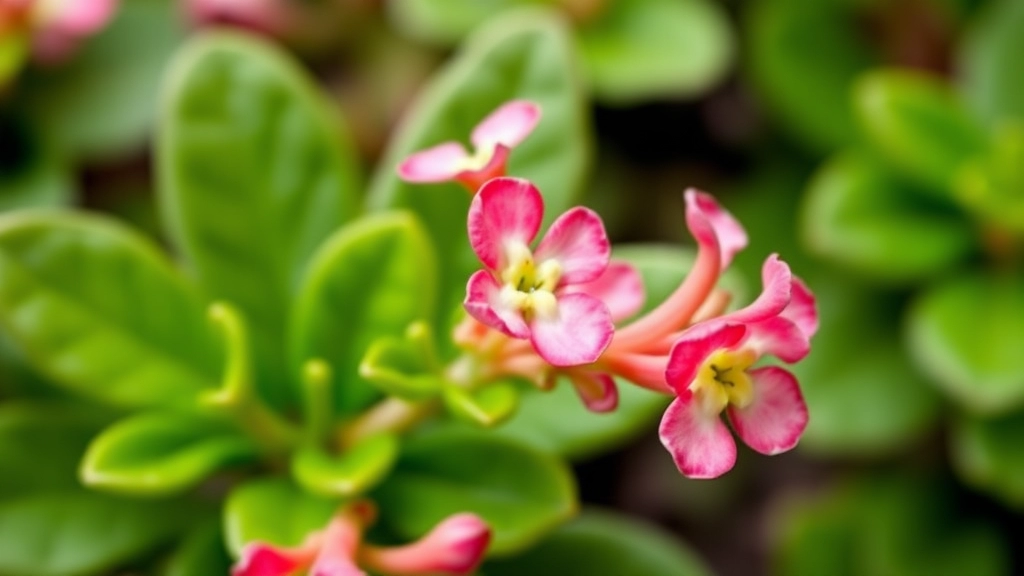Creating a Stunning Garden with Minimal Effort
Ever wondered how to create a stunning garden with minimal effort? Let me introduce you to the Kalanchoe Paddle Plant Flower. This resilient beauty not only adds a splash of colour to your space but also requires little maintenance. Perfect for both seasoned gardeners and newbies, this plant is a game-changer.
Growing the Kalanchoe Paddle Plant Flower
Growing the Kalanchoe Paddle Plant Flower is straightforward. Simply ensure it gets plenty of sunlight and occasional watering. It’s that easy! Whether you’re looking to spruce up your home or start a new gardening hobby, this plant is the ideal choice. Let’s dive into the steps to make your garden bloom effortlessly.
When considering the Kalanchoe Paddle Plant, many of us wonder what makes it unique and appealing.
This succulent, also known as Kalanchoe luciae, is celebrated for its striking, paddle-shaped leaves that can grow quite large, often resembling a vibrant green or reddish paddle.
Key Features:
– Leaf Structure: The leaves are thick and fleshy, designed to store water, making them drought-resistant.
– Size: Mature plants can reach heights of up to 60 cm (24 inches) and spread about 30 cm (12 inches) wide.
– Colouration: The leaves may develop a beautiful reddish hue at the edges when exposed to bright sunlight.
– Growth Habit: It typically grows upright, creating an attractive focal point in any garden or indoor space.
These characteristics not only make the Kalanchoe Paddle Plant visually appealing, but they also contribute to its resilience in various conditions.
For those interested in learning more about how to grow and care for Kalanchoe luciae, our [how-to-grow-and-care-for-kalanchoe-luciae-paddle-plant](https://planthq.org/how-to-grow-and-care-for-kalanchoe-luciae-paddle-plant/) guide provides detailed insights. Additionally, if you’re dealing with issues like leaf discoloration, you might find our article on [why-are-my-kalanchoe-leaves-turning-red](https://planthq.org/why-are-my-kalanchoe-leaves-turning-red/) helpful.
Ideal Growing Conditions
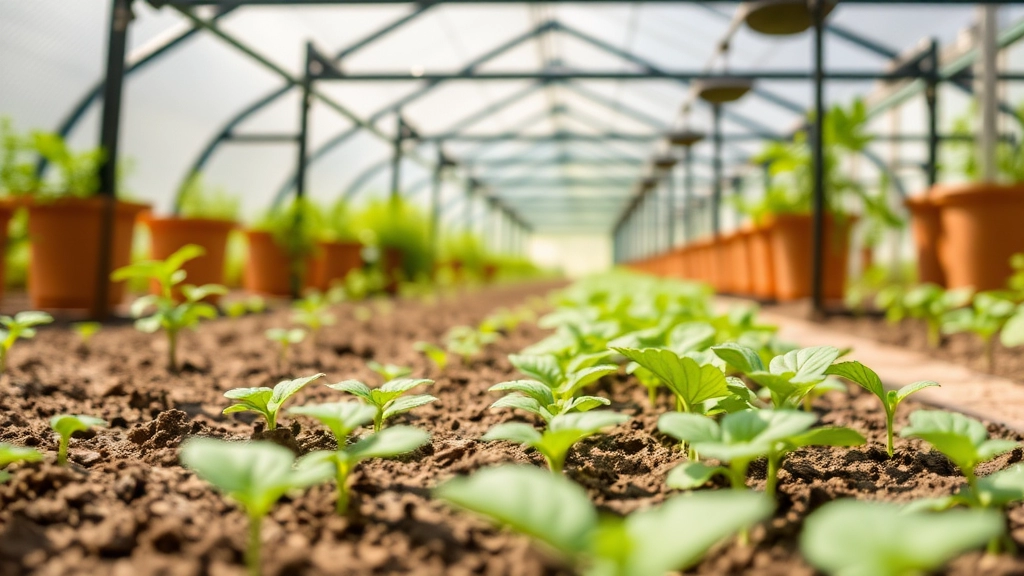
So, you’re keen on growing a Kalanchoe Paddle Plant? Great choice! But before you dive in, let’s chat about what conditions this beauty needs to thrive.
Light
First off, light is crucial. Kalanchoe Paddle Plants love bright, indirect sunlight.
- Best Spot: A south or west-facing window is ideal.
- Watch Out: Too much direct sun can scorch those lovely leaves.
Temperature
Next, let’s talk about temperature. These plants are pretty chill but prefer warmth.
- Ideal Range: Aim for 20-25°C (68-77°F) during the day.
- Nighttime Chill: They can handle a drop to about 10°C (50°F) at night, but don’t let it get too cold.
Humidity
Now, onto humidity. Kalanchoe Paddle Plants are not picky here.
- Low Humidity: They thrive in dry conditions, so no need for a humidifier.
- Air Circulation: Just ensure there’s good airflow around them.
Space
Lastly, consider space. These plants can grow quite large, so give them room to spread out.
- Pot Size: A pot that’s too small can stunt their growth.
- Avoid Crowding: Keep them away from other plants that might compete for light.
Watering Requirements
One of the most common concerns for Kalanchoe Paddle Plant owners is the watering routine.
How often should you water?
Can you overwater?
These questions are crucial for ensuring your plant thrives.
Understanding Watering Needs
The Kalanchoe Paddle Plant is a succulent, which means it stores water in its leaves. This unique characteristic makes it more tolerant of drought than other plants.
Here are some key watering guidelines:
- Frequency: Water every 2-3 weeks during the growing season (spring and summer).
- Soil Dryness: Always check the top inch of soil; it should be completely dry before watering again.
- Seasonal Adjustments: Reduce watering in autumn and winter as the plant enters dormancy.
- Watering Method: Use the soak-and-dry method. Water thoroughly until it drains from the bottom, then let the soil dry out completely.
Signs of Overwatering
Be vigilant for signs that you may be overwatering:
- Yellowing leaves
- Mushy stems
- Leaf drop
If you notice these symptoms, it’s time to cut back on watering. For more detailed information, you can refer to our complete guide on how often to water Kalanchoe.
Additionally, if you want to learn about the optimal care for your plant, check out our optimal care guide for Kalanchoe Paddle Plant.
Soil and Fertilization Needs
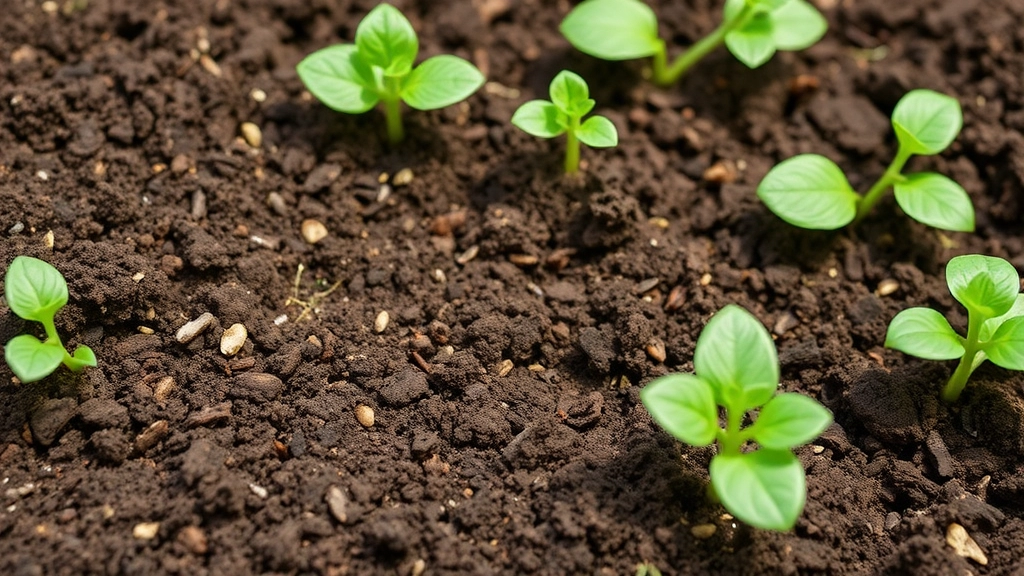
When it comes to nurturing the Kalanchoe Paddle Plant, the right soil and fertilization are key components to ensure its vibrant growth and health. You might be wondering, “What type of soil is best for my Kalanchoe?”
Soil Requirements:
- Well-Draining Soil: Kalanchoes thrive in well-draining soil to prevent root rot. A cactus or succulent mix is an excellent choice.
- pH Level: Aim for a slightly acidic to neutral pH, ideally between 6.0 and 7.0. This range supports nutrient uptake.
- Texture: Incorporate perlite or sand into your soil mix for improved aeration and drainage.
Fertilization Needs:
- Frequency: Fertilize your Kalanchoe during the growing season (spring and summer) every 4-6 weeks.
- Type of Fertilizer: Use a balanced, water-soluble fertiliser with an NPK ratio of 10-10-10 or a formula designed for succulents.
- Dilution: Always dilute the fertilizer to half the recommended strength to avoid overwhelming the plant.
Additional Tips:
- Signs of Nutrient Deficiency: Watch for yellowing leaves or stunted growth, which may indicate a need for fertilization.
- Post-Fertilization Care: After fertilizing, ensure the plant is well-watered but avoid over-saturation.
Flowering Season and Cycle
Are you eager to see your Kalanchoe Paddle Plant bloom? Understanding its flowering season and cycle can help you anticipate those vibrant blossoms.
The Kalanchoe Paddle Plant typically flowers in late winter to early spring. This period aligns with its natural growth cycle, where the plant responds to increasing daylight hours and warmer temperatures.
Flowering Cycle
- Initial Budding: After a period of dormancy, the plant begins to form buds.
- Blooming Phase: Once the buds mature, you’ll witness clusters of small, tubular flowers emerging.
- Duration: The flowering phase can last several weeks, providing a stunning display.
Factors Influencing Flowering
To encourage blooming, consider these essential factors:
- Light Exposure: Ensure your plant receives bright, indirect sunlight. Too much direct light can scorch the leaves.
- Temperature: Keep it in a warm environment, ideally between 20°C to 25°C (68°F to 77°F).
- Watering Routine: Maintain a consistent watering schedule, allowing the soil to dry out between waterings.
Encouraging Blooms
To promote a flourishing display, you might want to:
- Prune Regularly: Remove dead or spent leaves to redirect energy to new growth.
- Fertilize: Use a balanced fertiliser during the growing season to boost flower formation.
For more detailed care tips, check out our Kalanchoe Paddle Plant Care Guide. If you’re interested in other flowering Kalanchoe varieties, our Kalanchoe Orange Bells Care Guide might be helpful.
Common Pests and Diseases
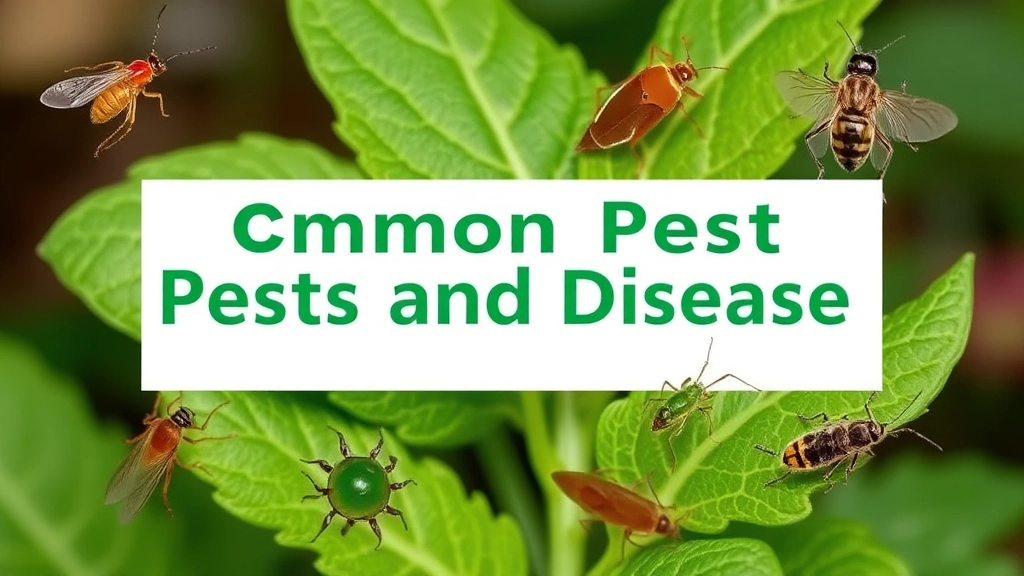
Now that we’ve covered how to care for your Kalanchoe Paddle Plant, let’s chat about a few pesky issues that might pop up.
If you’re like me, the last thing you want is to see your beloved plant suffering from pests or diseases.
Common Pests
- Mealybugs:
- These little white fluff balls love to hide in the leaf joints.
- They suck the sap, causing yellowing leaves.
- Aphids:
- Tiny green or black bugs that can cluster on new growth.
- They can stunt your plant’s growth.
- Spider Mites:
- Tiny, almost invisible, but leave behind fine webbing.
- They thrive in dry conditions and can cause leaf drop.
Common Diseases
- Root Rot:
- Overwatering is the main culprit here.
- Look for yellowing leaves and mushy roots.
- Powdery Mildew:
- A white, powdery substance on leaves, usually due to high humidity.
- It can hinder photosynthesis and lead to further issues.
Prevention Tips
- Regular Checks:
- Keep an eye on your plant. Early detection is key!
- Good Air Circulation:
- Ensure your plant isn’t cramped. This helps prevent diseases.
- Proper Watering:
- Avoid overwatering to keep root rot at bay.
Propagation Methods
As we explore the propagation methods for the Kalanchoe Paddle Plant, it’s essential to understand how easy and rewarding it can be to expand your collection. Many plant enthusiasts worry about the best ways to propagate their plants without causing damage.
Leaf Cuttings
One of the simplest methods is through leaf cuttings. Here’s how to do it:
- Select a healthy leaf: Choose a mature, healthy leaf from the parent plant.
- Cut the leaf: Use clean, sharp scissors to cut the leaf at the base.
- Let it callous: Place the leaf on a dry surface for a few days until the cut end forms a callous.
- Plant the leaf: Once calloused, place it in well-draining soil, ensuring the cut end is slightly buried.
- Water lightly: Mist the soil to keep it slightly moist, but avoid overwatering.
Offsets
Kalanchoe Paddle Plants often produce offsets or âpupsâ that can be separated from the main plant.
- Identify offsets: Look for small plants growing at the base of the parent plant.
- Gently separate: Carefully twist or cut the offset from the main stem.
- Replant: Place the offset in its own pot with suitable soil and water lightly.
Leaf Propagation
Another method is leaf propagation, which works well for the Kalanchoe Paddle Plant.
- Choose a leaf: Select a healthy leaf.
- Cut into sections: Slice the leaf into smaller sections, ensuring each piece has a vein.
- Callous the pieces: Allow the cut sections to dry and callous for a few days.
- Plant the sections: Position the pieces in soil, with the vein side down.
- Water sparingly: Mist the soil and keep it lightly moist.
Seeds
While less common, propagation can also be done using seeds.
- Collect seeds: If your plant flowers, collect seeds once they mature.
- Sow seeds: Plant them in a seed tray filled with seed-starting mix.
- Keep moist: Water gently and cover with plastic wrap until germination.
For more detailed steps on how to successfully propagate Kalanchoe plants, check out our guide on propagating Kalanchoe Lavender Scallops. Additionally, you can learn more about growing Kalanchoe from leaf cuttings for a comprehensive understanding.
Pruning and Maintenance of the Kalanchoe Paddle Plant
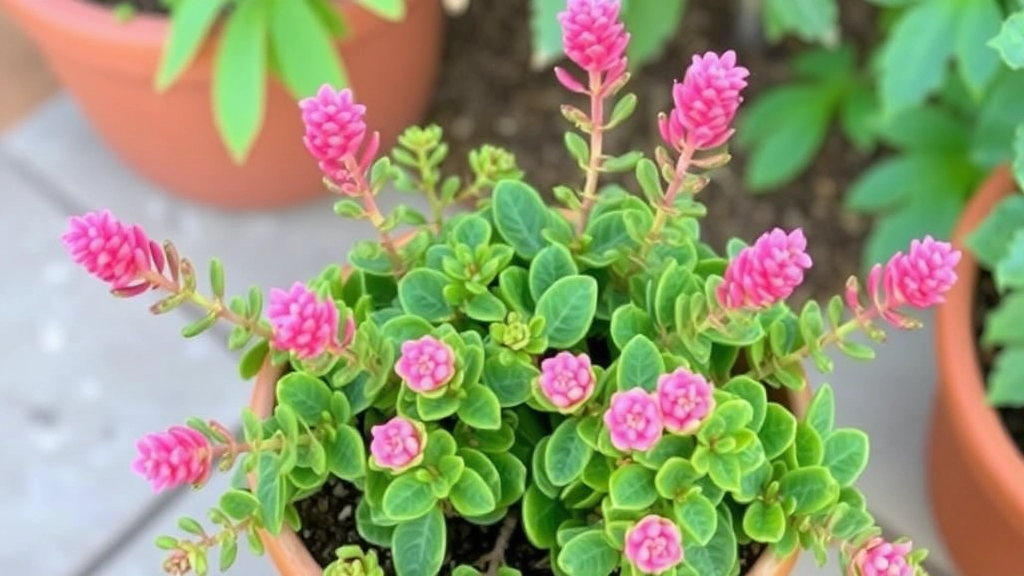
So, you’ve got your Kalanchoe Paddle Plant thriving, but now you’re wondering about pruning and maintenance.
Why Prune?
Pruning isn’t just about keeping things tidy; it’s crucial for the health and growth of your plant.
Here’s what you need to know:
- Remove Dead Leaves: Snip off any dead or yellowing leaves. This helps prevent diseases and encourages new growth.
- Shape the Plant: If your Paddle Plant is getting a bit unruly, don’t hesitate to trim it back. This can help maintain its unique paddle shape.
- Encourage Blooms: Pruning can stimulate blooming. If you notice flower stalks fading, cut them back to encourage fresh growth.
When to Prune?
The best time to prune your Kalanchoe is during the growing season, typically in spring or early summer. This way, your plant can recover quickly and thrive.
Maintenance Tips:
Alongside pruning, here are some easy maintenance tips:
- Dust the Leaves: Wipe the leaves with a damp cloth to keep them clean and maximize sunlight absorption.
- Check for Pests: Regularly inspect your plant for any signs of pests like mealybugs or aphids. Catching them early is key!
- Rotate the Plant: If you notice it leaning towards the light, give it a gentle turn occasionally to promote even growth.
Incorporating these simple practices into your routine will keep your Kalanchoe Paddle Plant looking its best.
Indoor vs. Outdoor Growth of the Kalanchoe Paddle Plant
Many enthusiasts wonder whether to grow the Kalanchoe Paddle Plant indoors or outdoors.
Both options have their unique advantages and challenges.
Indoor Growth
Growing the Kalanchoe Paddle Plant indoors can be incredibly rewarding.
Here are some key points to consider:
- Light Requirements: The plant thrives in bright, indirect sunlight. A south-facing window is ideal.
- Temperature Control: Indoor environments often provide stable temperatures, typically between 18°C to 24°C, which is perfect for this succulent.
- Space Considerations: Indoor growth allows for more controlled conditions, especially in colder climates.
- Pest Management: Keeping the plant indoors can reduce the risk of outdoor pests and diseases.
Outdoor Growth
On the flip side, growing the Kalanchoe Paddle Plant outdoors can also be beneficial.
Here are the highlights:
- Natural Light: Outdoor settings provide abundant sunlight, which can enhance growth and flowering.
- Soil Drainage: Outdoor soil can often be better drained than potting soil, preventing root rot.
- Space for Growth: If you have a garden, the plant can spread out and thrive without the constraints of a pot.
- Pollination Opportunities: Outdoor plants may attract pollinators, which can enhance the flowering cycle.
Making the Choice
Ultimately, the decision between indoor and outdoor growth depends on your specific circumstances.
Consider factors like climate, space, and your ability to provide consistent care. For more detailed guidance on optimal care, you can refer to our complete care guide for pink Kalanchoe plant or learn how to care for Kalanchoe succulent effectively.
Benefits of Growing Kalanchoe Paddle Plant
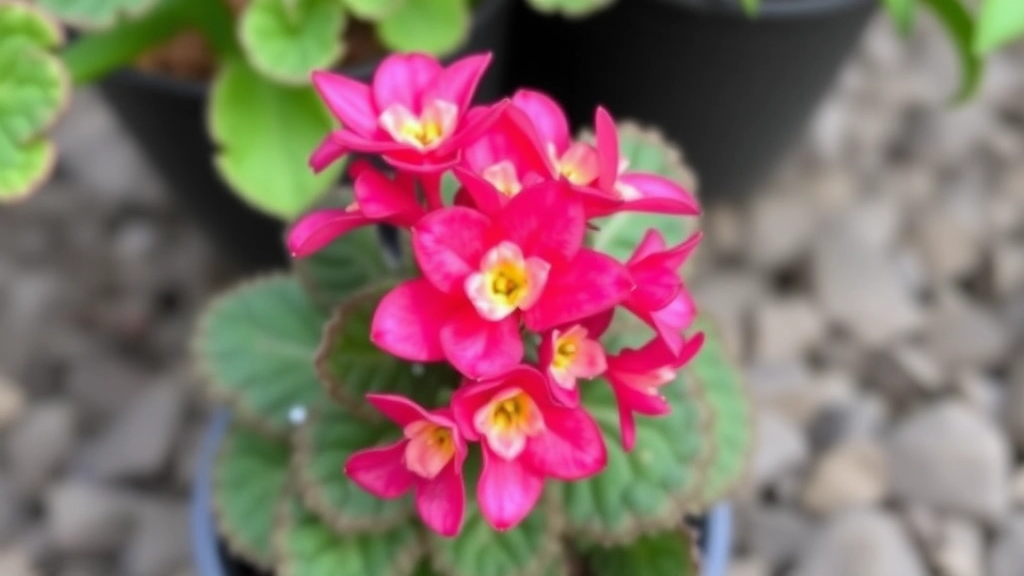
So, you’ve been thinking about adding a Kalanchoe Paddle Plant to your green space? You’re not alone! Many plant lovers are drawn to this unique succulent for a bunch of reasons.
Aesthetic Appeal
First off, let’s talk looks. The Kalanchoe Paddle Plant, with its striking, paddle-shaped leaves, is a real showstopper.
- Visual Interest: Its vibrant green leaves can add a pop of colour to any room or garden.
- Unique Shape: The unusual shape makes it a conversation starter.
Low Maintenance
Worried about plant care? Don’t be! This beauty is incredibly low-maintenance.
- Drought Tolerant: It thrives on neglect, needing minimal watering.
- Resilient: Perfect for those who might not have a green thumb.
Air Purification
Did you know that having plants can improve your indoor air quality?
- Natural Filter: Kalanchoe Paddle Plants help filter out toxins, making your space feel fresher.
- Breathe Easy: Cleaner air can lead to better health and well-being.
Educational Opportunities
If you’ve got kids or just want to learn something new, growing Kalanchoe can be a fun experience.
- Hands-On Learning: It’s a great way to teach about plant care and responsibility.
- Science Lessons: You can explore topics like photosynthesis and plant biology.
Versatility
Whether you’re an indoor plant enthusiast or love outdoor gardening, the Kalanchoe Paddle Plant fits right in.
- Indoor Charm: Perfect for bright windowsills.
- Outdoor Flair: Great for rock gardens or as part of a succulent arrangement.
Stress Relief
Let’s be honest, life can get hectic.
- Calming Presence: Just having plants around can reduce stress and promote relaxation.
- Mindfulness: Tending to your Kalanchoe can be a meditative experience.
Troubleshooting Common Issues
Growing the Kalanchoe Paddle Plant can be a rewarding experience, but sometimes you may encounter issues that require attention.
Common Problems and Solutions
1. Yellowing Leaves
Cause: Overwatering or poor drainage.
Solution:
- Check the soil moisture.
- Allow the top inch of soil to dry out before watering again.
- Ensure your pot has drainage holes.
2. Dropping Leaves
Cause: Underwatering or sudden temperature changes.
Solution:
- Water the plant thoroughly if the soil is dry.
- Keep the plant in a stable environment, avoiding drafts.
3. Stunted Growth
Cause: Insufficient light or nutrients.
Solution:
- Place the plant in a brighter location.
- Consider fertilising during the growing season with a balanced fertiliser.
4. Pests
Common Pests: Mealybugs and aphids.
Solution:
- Inspect the plant regularly.
- Remove pests with a damp cloth or use insecticidal soap if necessary.
5. Wilting
Cause: Either overwatering or underwatering.
Solution:
- Assess soil moisture.
- Adjust your watering schedule based on the plant’s needs.
General Tips for Prevention
- Regular Monitoring: Check your plant weekly for signs of distress.
- Proper Placement: Ensure the plant receives adequate sunlight without direct scorching.
- Correct Watering: Always err on the side of underwatering rather than overwatering.
For more detailed care tips, you can refer to our Kalanchoe Flapjack Paddle Plant Care Guide and learn about the best practices for indoor and outdoor care of your Kalanchoe plants.
So, you’ve got your Kalanchoe Paddle Plant thriving, and now you’re wondering what to pair it with, right?
Choosing the right companion plants can elevate your garden game and create a stunning visual.
Here are some top picks for companion plants:
– **Aloe Vera**: They share similar care needs and look fabulous together.
– **Sedum**: These hardy succulents complement the Paddle Plant’s unique shape.
– **Echeveria**: With their rosette forms, they add a pop of colour and texture.
– **Agave**: Their bold leaves create a striking contrast.
– **Cacti**: Perfect for a desert-themed garden, plus they thrive in similar conditions.
When it comes to landscaping ideas, here’s how to make the most of your Kalanchoe Paddle Plant:
– **Rock Gardens**: Create a low-maintenance rock garden featuring your Paddle Plant alongside other succulents.
– **Containers**: Use terracotta pots for a rustic vibe. Mix and match various succulents for a lively display.
– **Vertical Gardens**: Try a vertical setup to save space and create a stunning backdrop.
– **Border Planting**: Use Kalanchoe as a border plant for pathways or flower beds.
These combinations not only enhance the aesthetic but also create a thriving ecosystem. For more detailed care tips, check out this [complete guide to growing Kalanchoe Copper Spoons succulents](https://planthq.org/complete-guide-to-growing-kalanchoe-copper-spoons-succulents/) and learn [how to propagate Kalanchoe Pink Butterflies](https://planthq.org/how-to-propagate-kalanchoe-pink-butterflies-stepbystep-guide-2/).
FAQs About Kalanchoe Paddle Plant Flower
What are the ideal growing conditions for a Kalanchoe Paddle Plant?
The Kalanchoe Paddle Plant thrives in bright, indirect sunlight. It prefers temperatures between 20-25°C (68-77°F) during the day and can handle a drop to about 10°C (50°F) at night. Low humidity and good air circulation are also important for its growth.
What type of soil is best for a Kalanchoe Paddle Plant?
Kalanchoe Paddle Plants require well-draining soil to prevent root rot. A cactus or succulent mix with a slightly acidic to neutral pH (6.0-7.0) is ideal. Incorporating perlite or sand can improve aeration and drainage.
How often should I fertilize my Kalanchoe Paddle Plant?
Fertilize your Kalanchoe during the growing season (spring and summer) every 4-6 weeks. Use a balanced, water-soluble fertilizer with an NPK ratio of 10-10-10 or a formula designed for succulents. Always dilute the fertilizer to half the recommended strength.
What pests should I watch out for?
Common pests include mealybugs, aphids, and spider mites. Mealybugs appear as white fluff balls in leaf joints, aphids are tiny green or black bugs that cluster on new growth, and spider mites leave behind fine webbing and thrive in dry conditions.
How can I prevent diseases in my Kalanchoe Paddle Plant?
To prevent diseases, regularly check your plant for early signs of issues, ensure good air circulation, and avoid overwatering to keep root rot at bay. Powdery mildew, a common disease, appears as a white, powdery substance on leaves and is usually due to high humidity.
When and why should I prune my Kalanchoe Paddle Plant?
Prune your Kalanchoe Paddle Plant during the growing season (spring or early summer) to remove dead leaves, shape the plant, and encourage blooming. Pruning helps prevent diseases and promotes new growth.
What are the benefits of growing a Kalanchoe Paddle Plant?
The Kalanchoe Paddle Plant offers several benefits, including aesthetic appeal with its unique paddle-shaped leaves, low maintenance, air purification, educational opportunities, versatility for indoor and outdoor settings, and stress relief through its calming presence.
References
-
The Spruce: Growing Kalanchoe Paddle Plant
-
Gardening Know How: Kalanchoe Paddle Plant Care
-
Houseplants Expert: Kalanchoe Thyrsiflora
